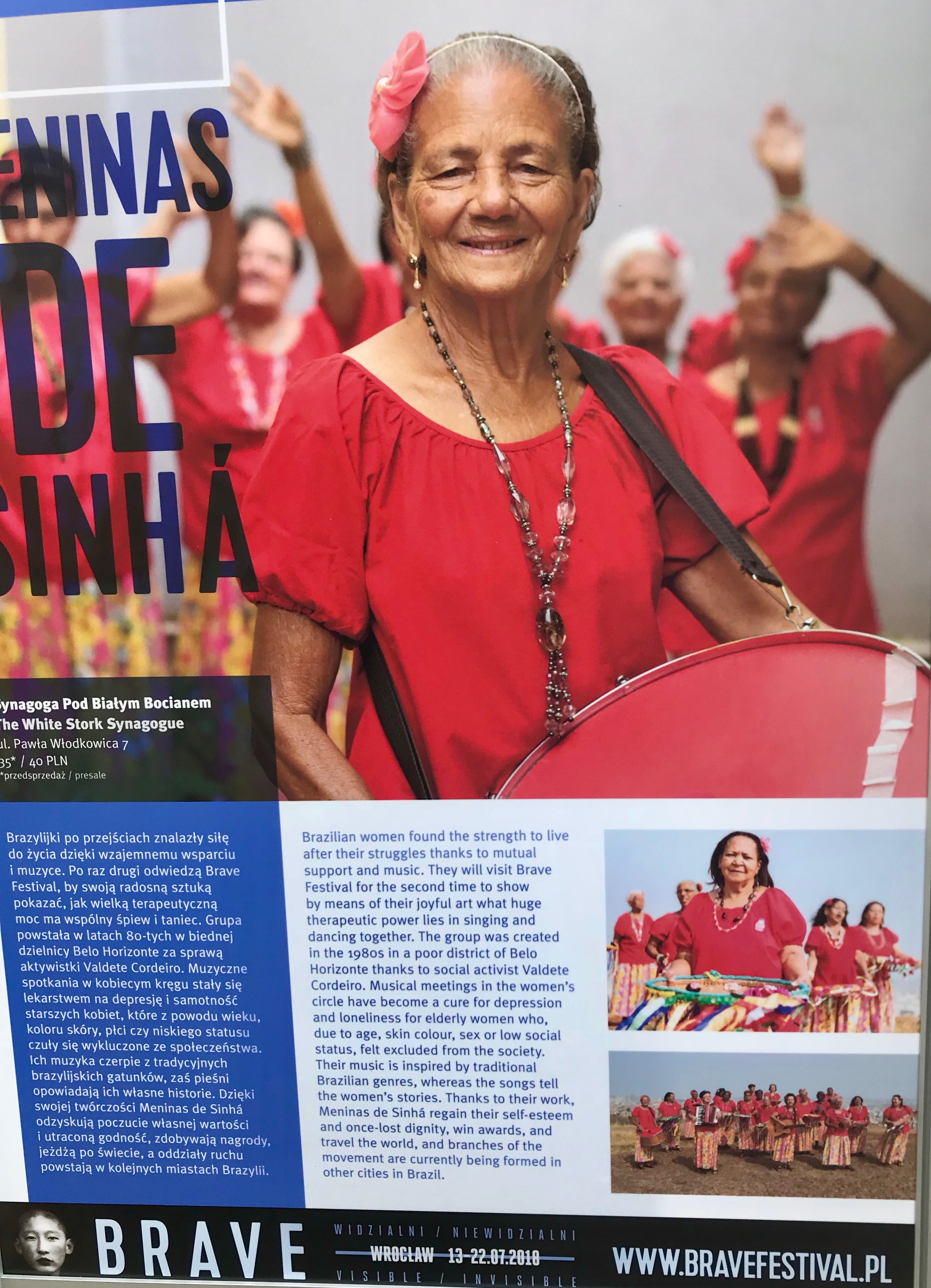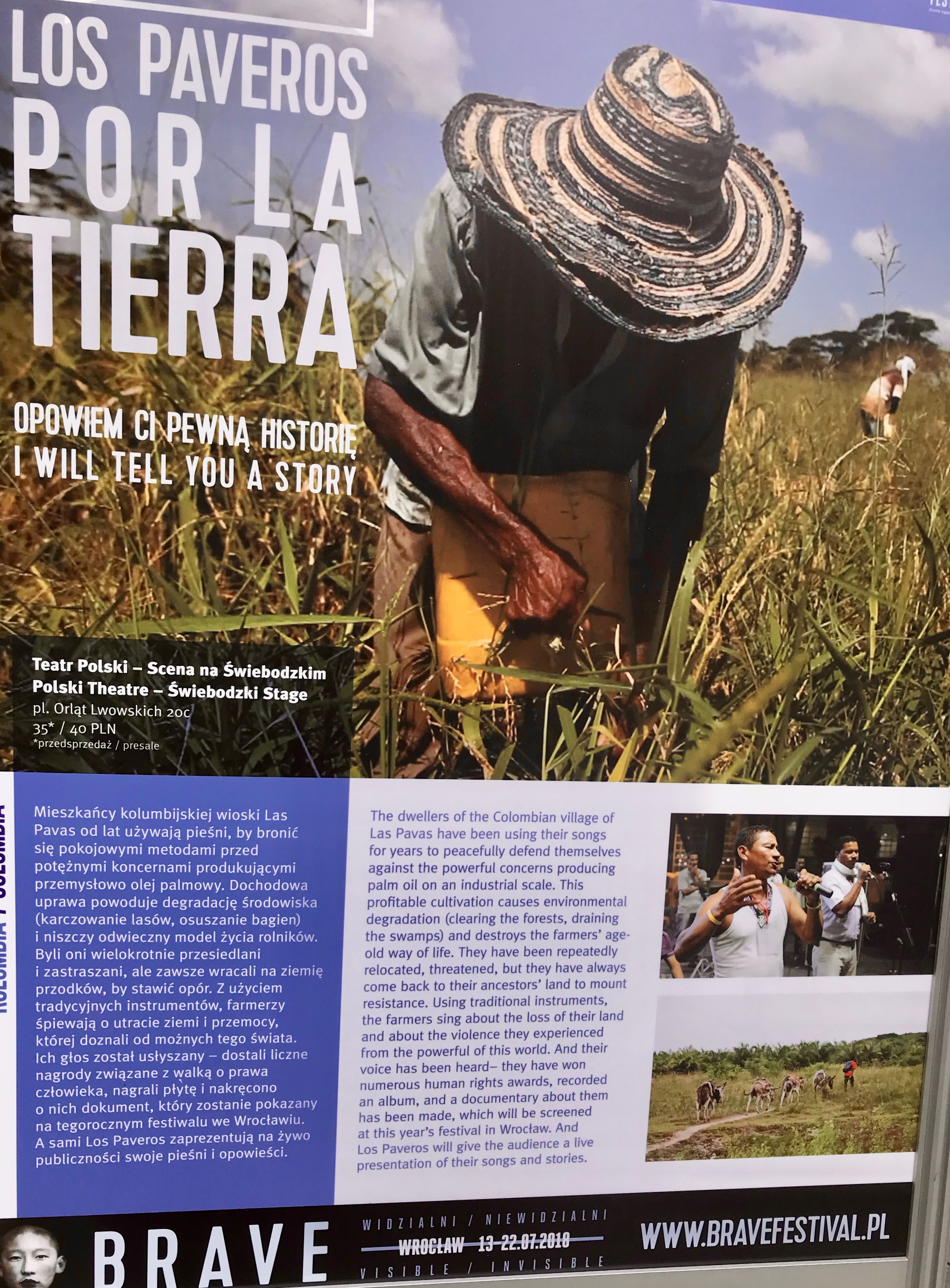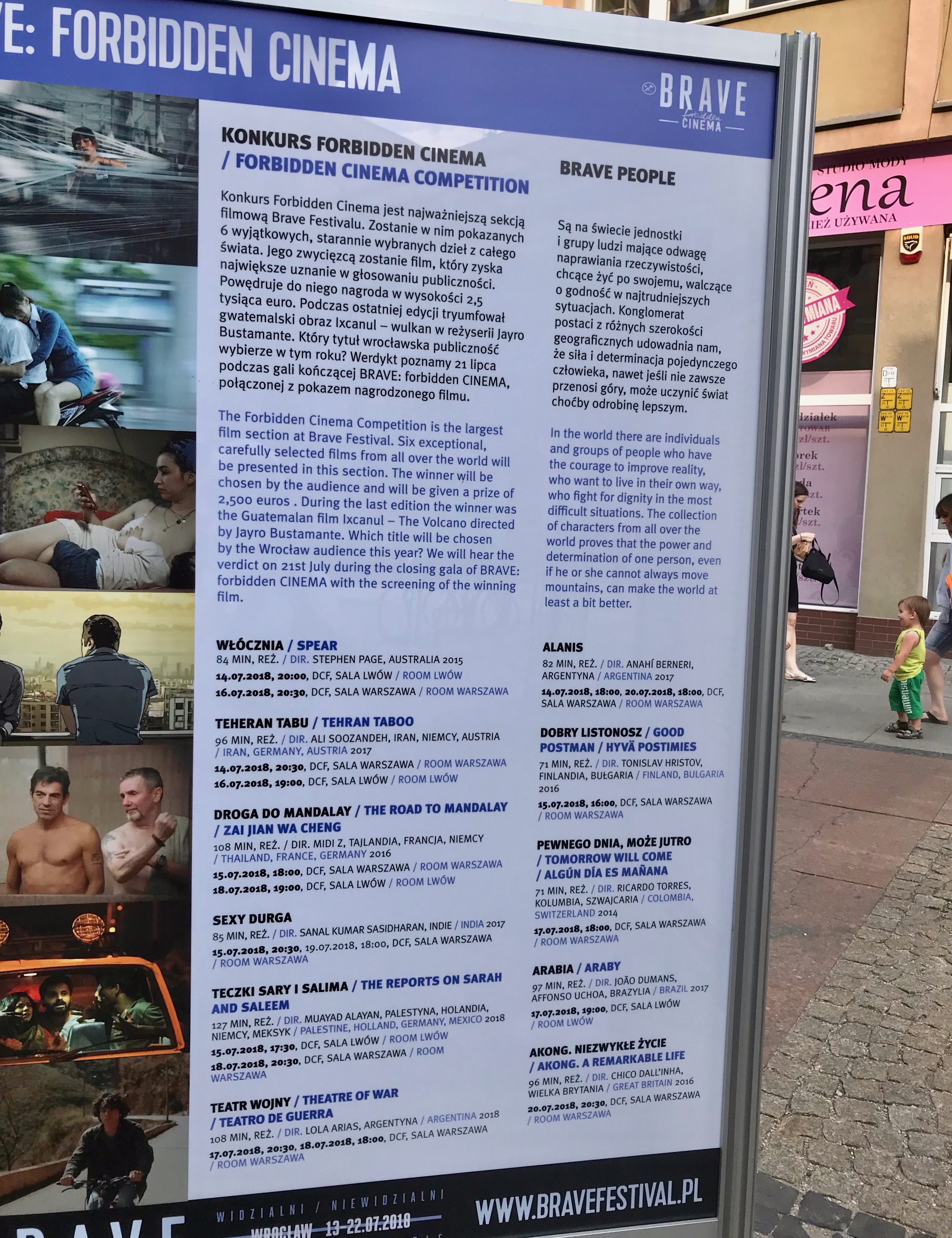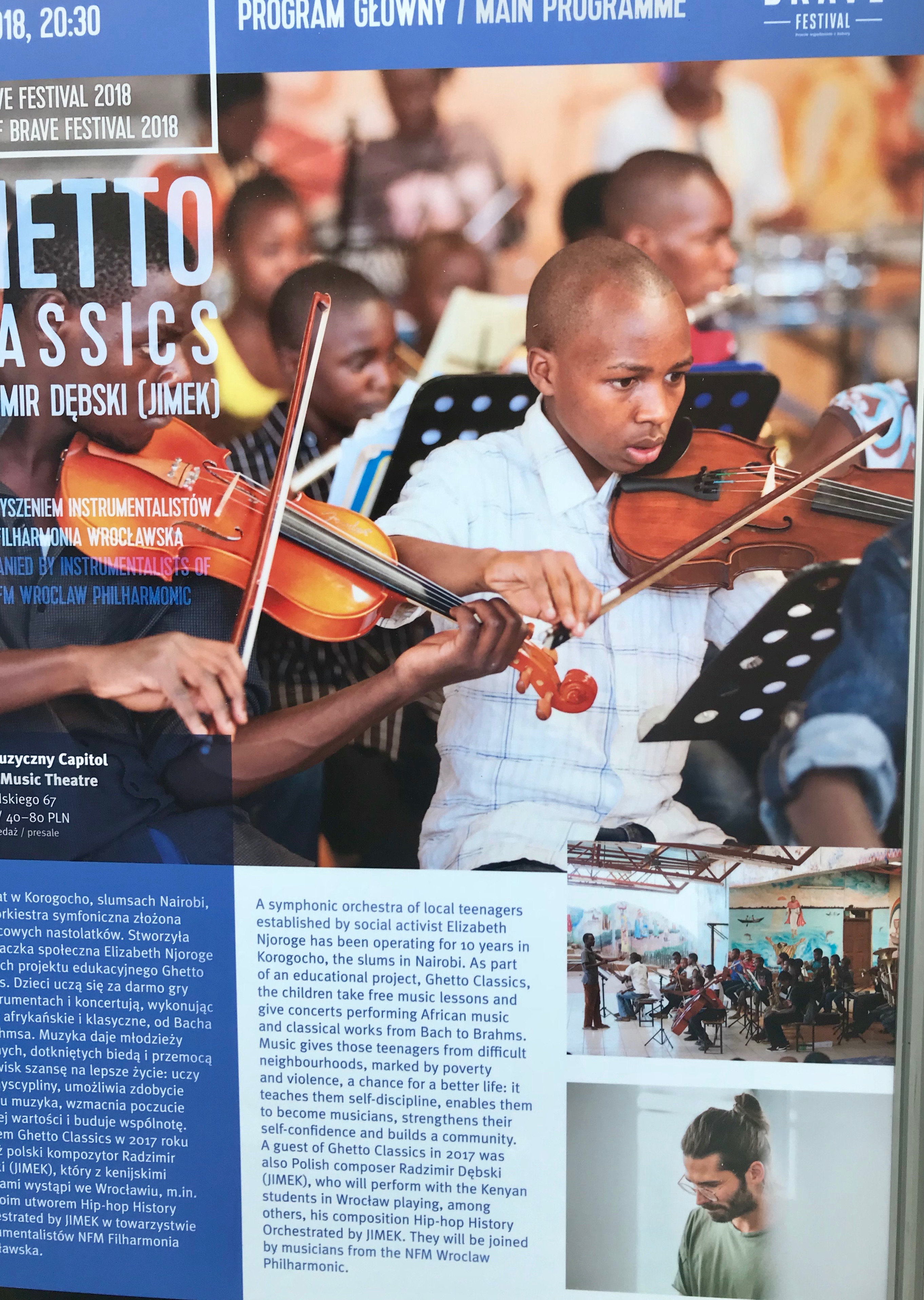- Home
- About
- Books
- Articles
- Insights Insights
- Search Search
- Contact Contact
June 25, 2019--Last summer I spent several days in Wroclaw, Poland, a city in the western part of the country that up to 1945 had been Breslau, the capital of the German province of Silesia.
One sees a lot of depressing news about worrying political trends around the world, and Poland is no exception with a political party in power that is openly nationalistic, xenophobic, and increasingly authoritarian. Yet the deeper reality in an important Polish city like Wroclaw is the opposite: Miraculously, the post-Cold War Wroclaw now is a beacon of openness, tolerance, and creativity, and the unimaginable wounds of 20th Century violence have been replaced by a remarkable reconciliation between Poland and Germany, and a spirit of multi-cultural tolerance
A wonderful tribute to the spirit of openness and tolerance of Wroclaw is the biennial Brave Festival, organized by artists and the avant guard “Song of the Goat Theater” in Wroclaw since 2005: “The festival is intended as an opportunity for attendees to speak about where they come from, their values, their tradition and their spirituality. It aims to save and protect forgotten, abandoned and forlorn cultures. Brave Festival also has a project with annual events called Brave Kids, which aims is to introduce, integrate and start a collaboration of artistic groups of children from different continents.” (see also https://en.wikipedia.org/wiki/Brave_Festival)
a project with annual events called Brave Kids, which aims is to introduce, integrate and start a collaboration of artistic groups of children from different continents.” (see also https://en.wikipedia.org/wiki/Brave_Festival)
Nearly all the inhabitants of Wroclaw are second or third generation descendents of people who themselves were forcibly deported hundreds of kilometers west to occupy involuntarily the ravaged territory of an area where millions of the original inhabitants themselves were deported in a mass ethnic cleansing, Wroclaw may have developed a more of a inoculation against the revival of ethnic chauvinism which we are witnessing around the world.
At the end of World War II Stalin moved the borders of Poland hundreds of kilometers westward, forcibly expelling millions of Germans, annexed 49% of the pre-World War II territory of Poland to the Soviet Union, and forcibly and involuntarily resettled millions of Poles from these annexed eastern Polish areas into the devastated and depopulated former provinces of Germany to build a new life in the new western provinces of post World War II Poland. In the previous several years the German invasion and occupation of Poland had entailed the murder of over six million Polish civilians, half of whom were Christian and nearly the other half Jewish, exterminating over one fifth of the population of the country.
The reconciliation of Wroclaw with its past began in the Communist era when the Polish Catholic bishops in 1965 sent a message to their German counterparts, The Pastoral Letter of the Polish Bishops to their German Brothers“The Pastoral Letter of the Polish Bishops to their German Brothers,” asking to forgive themfor the forced deportation of millions of Germans, which after the official hostilities of World War II were halted, also entailed the death of somewhere between 100,000 and 400,000 German civilians, actions which for the most part the Polish people and state had no role in deciding. The new borders of Poland were agreed upon by Stalin, Churchill, and Roosevelt at the Yalta Conference in February, 19 45, and the specific ratification of the need for mass expulsions of millions of ethnic Germans from the former provinces of German east of the Oder-Neisse rivers was endorsed by Stalin, Churchill and Truman at the Potsdam Conference in August, 1945.
45, and the specific ratification of the need for mass expulsions of millions of ethnic Germans from the former provinces of German east of the Oder-Neisse rivers was endorsed by Stalin, Churchill and Truman at the Potsdam Conference in August, 1945.
Breslau is also the birthplace of three great spiritual figures: in the Twentieth Century, Dietrich Bonhoeffer (1906-1945) and Edith Stein (1891-1942), as well as the great 17th Century German mystic Angelis Silesius (1624-1677). Angelus Sllesius was one of the greatest German spiritual poets, whose influence in the 20th Century was cited by figures as diverse as Jorge Luis Borges and Martin Heidegger. One can still see in Breslau the Saint Matthias church where he spent his last years and is buried inside (photo left, his birthname was Johannes Scheffler). Dietrich Bonhoeffer (1906-1945) was a leading German theologian and opponent of the Nazis, protesting the genocide of jews and the disabled, and was executed in the Flossenburg concentration camp just two weeks before the collapse of the Nazi regime. Edith Stein was a German Jewish philosopher who converted to Roman Catholicism and became a Carmelite nun. She studied with Edmund Husserl at Goettingen, who was also an intellectual mentor of Martin Heidegger and Herbert Marcuse. Stein was arrested by the SS in August, 1942 and sent to Auschwitz and martyred there together with her sister. She was canonized by Pope John Paul II in1998 as SaintTeresa Benedicta of the Cross, and she is one of six co-patron saints of Europe. 
An excellent book on Wroclaw's tortured 20th Century history is Uprooted: How Breslau Became Wroclaw During the Century of Expulsions by Gregor Thum (Princeton University Press, 2011). The whole recent history of Wroclaw over the past 80 years shows the extremes of human behavior, both evil and destructive, as well as resilient, forgiving, tolerant and creative.
Like Gdansk (formerly Danzig) to the north Wroclaw played an important role in the Solidarity movement in the 1980s; among other things it was a focal point of the "Freedom and Peace" movement, whose gestation was among conscientious objectors refusing to serve in Poland's Warsaw Pact allied army. Freedom and Peace was a movement of both pacificism and environmental protest. This plaque (see photo, left) commemorates how on July 2, 1988, participants of the "Freedom and Peace" Movement publicy burnt their military IDs, fought for the right of conscientious objection to military service, and "defended natural environment and supported ethnic minority r ights." Freedom and Peace faded from memory in the 1990s, but today, when right-wing nationalism and xenophobia have become politically resurgent in Poland as in many other countries, the example of Freedom and Peace is a Polish reminder of what true patriotism can be about. For a recent retrospective, see http://www.johnfeffer.com/challenging-the-warsaw-pact-from-within/
ights." Freedom and Peace faded from memory in the 1990s, but today, when right-wing nationalism and xenophobia have become politically resurgent in Poland as in many other countries, the example of Freedom and Peace is a Polish reminder of what true patriotism can be about. For a recent retrospective, see http://www.johnfeffer.com/challenging-the-warsaw-pact-from-within/
The Brave Festival remains as a living testament to the capacity of people to transcend the worst wounds of the past and to realize that in a globalized world we can be enriched by different cultures and identities while living peacefully together—the alternative, history shows, can result in violence and death beyond imagination.
Below, some photos of posters announcing some of the Brave Festival events (if you expand your screen to enlarge the image, you should be able to read them!):--In order from top row left: Syrian Expat Orchestra; International Disabled Breakdancers troupe; Brazilian women protest songs; Second Row: protest songs of rural community of Las Pavas Colombia; Festival of forbidden cinema; Congolese hip-hop poet and muscian; Third row: Third row: Brave Meetings, Brave Academy, Brave Contexts; Nairobi Kenya slum children orchestra; Albino Revolution-an African albino band fighting against discrimination against albinos (prevalent in some African countries). The next Brave Festival should take place in the summer of 2020.
 |
 |
 |
 |
 |
 |
 |
 |
 |